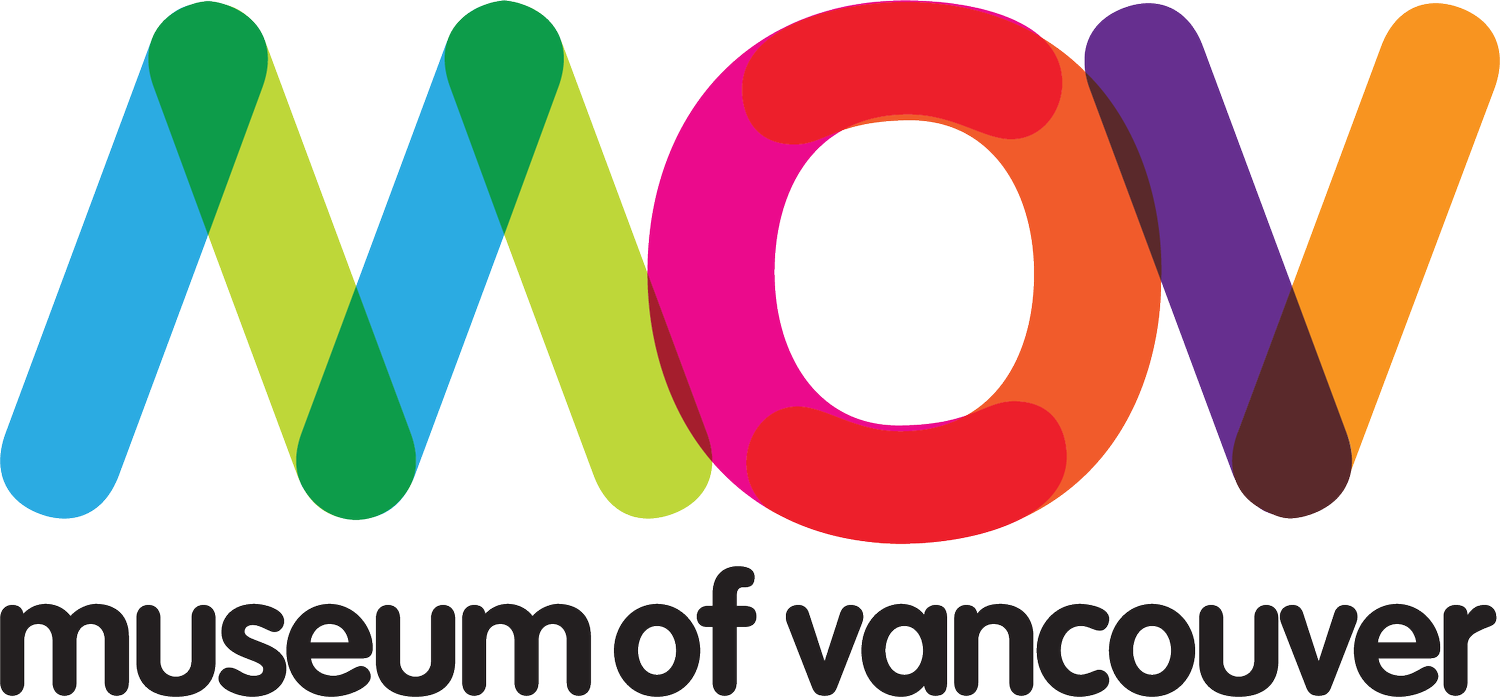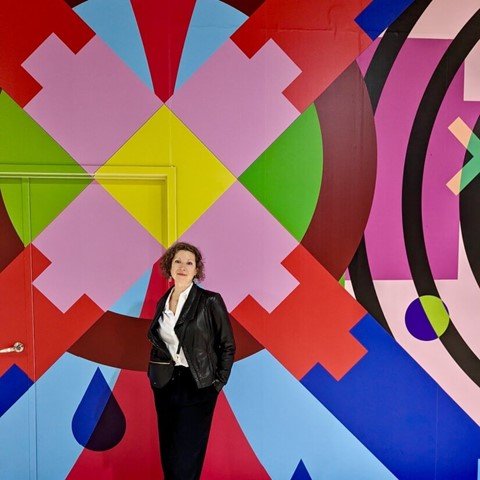Contemporary Indigenous Tattoo Practices:
The Embodiment of Ancestral Knowledge, Wisdom and Resilience
“This exhibition is based on my observations from countless hours of marking the skin of Indigenous and non-Indigenous peoples. It is based on my understanding of conversations with friends and colleagues on many of the topics covered in this exhibition. I have endeavored to make visible some of the things that are invisible in the work of ancestral skin markers. I hope this exhibition inspires artists, including ancestral skin markers, professional tattoo artists, et cetera to pick up their ancestral designs, symbols and motifs and create a contemporary world inhabited by our ancestral visual languages.” —Dion Kaszas, Co-Curator and Artist, True Tribal
This curatorial essay provides a deeper understanding behind the exhibition True Tribal: Contemporary Expressions of Ancestral Tattoo Practices. The essay was written by Dion Kaszas, with a section on bio-art, written by his co-curator Mireille Bourgeois of IOTA Institute. Click the button below to access a pdf of the essay and see below for additional information on the exhibition and its curators.
About the Curators
Dion Kaszas tattooing Ecko Aleck with Nlaka’pamux designs. Steve Recalma Photo.
Dion Kaszas
My name is Dion Kaszas. I am a Hungarian, Métis, and Nlaka'pamux ancestral skin marker and professional tattoo artist. For well over a decade, I have been working in reviving my ancestral skin marking practices and supporting the movement to restore ancestral tattooing across Canada. In 2018, I co-curated the exhibition, Body Language: Reawakening Cultural Tattooing of the Northwest, in collaboration with the Bill Reid Gallery in Vancouver, BC. This exhibition was acutely focused on the revival of ancestral tattooing of nations from the cultural area of the Northwest Coast, specifically the Haida, Tlingit, Nisga'a, and Heiltsuk. My work as an Interior Salish revivalist was included as a contrast to the more structured practices of the Northwest Coast nations. True Tribal: Contemporary Expressions of Ancestral Tattoo Practices, is an exhibition that looks to the work of contemporary Indigenous tattoo artists reaching back into their ancestral visual lexicon, creating contemporary embodied artistic masterpieces on the bodies of their clients, collaborators, and community members. These tattoos use the visual vocabulary of their respective communities. However, they are stretched and modified outside the conventions of traditional size, placement, and motifs of their ancestral embodied mark making practices.
As an ancestral skin marker and cultural practitioner who writes and talks about this work, I am acutely focused on highlighting the unseen and unexplored parts of Indigenous tattoo revival and ancestral skin marking. I am mindful that in this context, and in many contexts, some things are appropriate to share, and others are not. Until I participated in a 2020 Bio-art residency with my exhibition co-curator, Mireille Bourgeois (IOTA Institute), I did not have the language to describe this process. Today, sharing just enough to communicate what is intended – while leaving the most sacred, protected pieces for their appropriate context, is part of my ethics of care as a curator, practitioner, and community member. In this exhibition, I am trying to balance the desire to allow those who are unfamiliar with the practice of ancestral skin marking, and professional tattooing, a glimpse into what this work is from the perspective of Indigenous practitioners, knowledge holders, and artists and protecting and honoring the work, designs, and knowledge that is not intended for everyone.
Photo Courtesy of IOTA Institute.
Mireille Bourgeois, IOTA Institute
Mireille Bourgeois (she/her) is a white Acadian settler from Wolastoq (New Brunswick, Canada). Over the last 20 years Mireille has independently curated and participated in art projects in Switzerland, Portugal, Scotland, India, New York and throughout Canada, as well as published critical writing for Visual Arts News, Creative Times Press, C-Magazine, Canadian Art and the Canadian Film Institute. Her research explores themes on synesthesia, nonsense, the sublime through the field of media, visual, performance and bio-art. She has presented and collaborated in venues such as Dalhousie University Art Gallery (Nova Scotia), Art Gallery of Nova Scotia, Museum of Civilization (Ottawa), Bitforms (NYC), Haus Für Kunst (Switzerland), Ars Electronica (Austria), Ectopia and i3S (Portugal), the Reach Museum (BC) and the Museum of Vancouver. Mireille is the publisher and contributing writer for an artist monograph Permanent Revolution: Istvan Kantor (2014), as well as Glow, Not Gold an artist book of three Canadian animators (Conundrum Press, 2014). In 2016, Mireille folded her curatorial work into a new project and founded IOTA Institute. Since then, she has curated and led over a dozen major research projects. Notable projects include the commissioning of web works by artists Liz Solo, J.R. Carpenter and Jennifer Chan, as well as curating the Bio Art Series including such artists and scientists as Stelarc, Jennifer Willet and Andrew Pelling. Mireille completed a BFA at the Nova Scotia College of Art and Design (2001), and an MA from the Centre for Curatorial Studies at Bard College (2009) and is currently based in Nova Scotia, Canada where she is IOTA Institute/IOTA Studios’ Artistic Director.
Awakening Ancestral Designs: An Augmented Reality Experience
Serving both as a welcome point or a decompressing zone in the gallery’s lobby, the artworks Awakening Ancestral Designs: An Augmented Reality Experience. A QR code for each artwork is installed on thin plinths, and on a neighboring wall the viewer can see instructions and a shelf holding eight designed tattoo card stacks. The viewer here scans the code to experience a tattoo design projected into the gallery space. The tattoo designs stretch from the QR card into a 3-dimensional visual and engage the viewer in a playful animation. Here, I am hoping a learned experience can travel with the viewer outside of the museum’s doors, into public or personal space.
Holding Hands with the Past - Ancestor’s Wall
By embodying ancestral marks, we bring our ancestors into the present from the past. True Tribal holds a video projection of 32 commissioned designs that decorate imagery of non-gender specific body shapes to represent the surfacing of ancestors through tattoo revival. The designs rise through an ancestor one by one enveloping an arm, a torso, the curve of a back, and the landscape of a forearm or thigh. Tender yet powerful, this meditative moment surfaces non-human entities through a present and living human experience.
Guardians of the Past and Inspiring Warriors of the Future - Body Suit Portraits
As you enter the gallery, you will be confronted by eight 7-foot ceiling panels depicting large-scale photographs of Indigenous bodies marked in black ink. These document contemporary masterpieces from each of the eight artists who were invited to participate in this exhibition. They were photographed by Toonasa Luggi, Billie Jean Gabriel, Ecko Aleck and Qeveika. At the True Tribal exhibition’s core, the outward facing gaze of eight tattooed bodies watch the viewer as they explore the exhibition. Their presence forces an upward recognition of Indigenous bodies, engaging the visual sense through physical bodily and mental effort, enforcing an immediate power dynamic.
Standing inside the ceiling-mounted panels are eight plinths that present ancestral objects selected by each artist, that depict motifs and designs from their own culture groups. These photographs document each artist's next step in reviving their ancestral embodied mark-making practices. This is to create contemporary tattoo practices tied to the past but imagined with a complete understanding of who we are in the present. Seeking a balance between who our ancestors were, what they have been through, and what we continue to struggle through in the colonial era, and how that mixes with contemporary reality. These contemporary Indigenous tattoos take cues from ancestral practices but are reimagined using the electric tattoo machine. Because of modern tools, pigments, and techniques, the tattoos these artists can create are usually large, sometimes vibrant contemporary interpretations of ancestral designs and motifs, which seamlessly flow and fit the canvas of the human body. These tattoos use the visual vocabulary of their respective communities. However, they are stretched and modified outside the conventions of traditional size, placement and motifs of their ancestral embodied mark making practices.
Making the Invisible, Visible - Traces of an Internal Journey: Biological Impressions
Through my bio-art residency in 2020 with the IOTA Institute and my conversations with IOTA’s artistic director, Mireille Bourgeois, I became interested in finding a way to show the journey of someone who has been marked. I wanted to show that these marks are not just designs on a human canvas, I wanted to somehow communicate that these marks are on bodies, not just bodies, but bodies connected to human beings with emotions, thoughts, blood, nerves and physicality beyond the skin.
In the exhibition, a group of framed blood impressions titled, Traces of an Internal Journey: Biological Impressions, show the barrier sheets used during an embodied mark making session. They tell the story of the individual’s journey when they were being marked and you can faintly see the design, the sweat stains as evidence of the tossing, turning and jostling that the person endured. In many cases, you can see blood and blood plasma stains, leaving evidence of the person’s internal and external journey while receiving the mark. These paintings tell the story of what happened in the experience of being marked. They are a personal object gifted to me for the exhibition and show a moment in time. They hold layers of reason in moratorium, anxiously displaying a person's body, yet are also rooted in tongue-and-cheek spontaneity. These biological impressions are from friends, about real people, and show the fun and relationship in a way that roots it in the present day as read through trauma, biology and non-human forms of embodiment.




